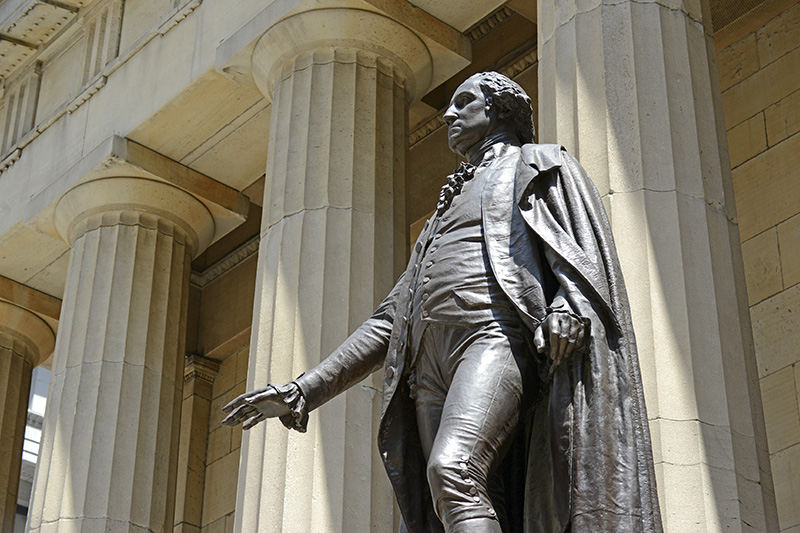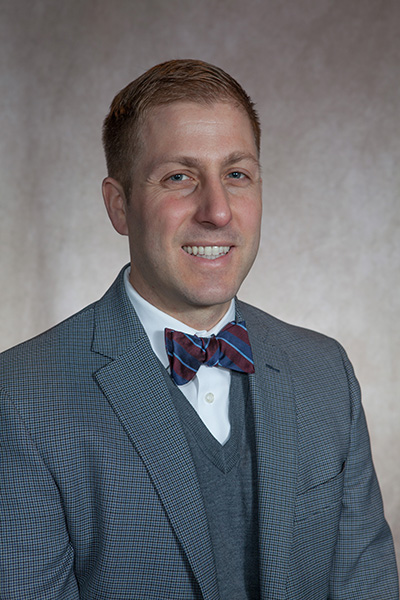- Apply
- Visit
- Request Info
- Give
History professor writes about New York City as the nation’s early capital
Written by Lucinda Weiss
Published on June 01, 2023

New York City’s brief tenure as the nation’s capital is the subject of an article by Thomas Balcerski, associate professor of history at Eastern Connecticut State University, in the new issue of “White House History Quarterly” magazine.
In “Before the White House: New York’s Capital Legacy,” Balcerski writes about New York City in the late 1790s, where George Washington delivered his inaugural address at Federal Hall, across from what is now Wall Street. Washington lived in a house on Cherry Street, a place that would now be under a pylon of the Brooklyn Bridge.
The original buildings of the time are long gone, other than Fraunce’s Tavern, where Washington’s farewell dinner was held. The tavern is now a museum on Pearl Street in lower Manhattan. The current version of Federal Hall was rebuilt in the 1840s.

New York City served as the capital for 16 months after the Constitution was adopted, Balcerski said. It had been the capital under the Articles of Confederation, preceding the Constitution. In all, it housed the government for four years before the capital moved to the then more populous Philadelphia. The District of Columbia had been selected as the government’s seat before the Philadelphia move, but Congress allowed 10 years for buildings to be erected there, Balcerski said.
The choice of a capital was “more of a power grab between regional and factional interests,” he said. The District of Columbia was chosen as a location central to more states, but its choice also favored the South and rural interests, he noted.
George Washington died in December 1799, never living in D.C., which was called “Washington” informally before his death, a usage that solidified afterward. Residents today favor the term D.C., and the name “Washington” is more often applied to government operations, Balcerski noted. John Adams became the first president to live in the White House.
While the capital was in New York City, Washington worked to expand and enlarge both his residence and the status of his office, Balcerski said. Washington found another home, which he rented from the French minister to the United States. It was on Broadway across from Federal Hall and was the largest house in the city at that time. His dwelling in Philadelphia was even grander, Balcerski said.
Balcerski, who has been on sabbatical leave for the past year, researched the article while he was at work on his actual sabbatical project, the history of the Democratic Party in the United States. That work is still in progress. He conducted the research at the New York Historical Society and the New York Public Library, “two areas particularly rich in archives for early America,” he said. New York City had an outsized role in the Democratic Party in the 19th century, Balcerski said. Researching that led to what he called the “perfect diversion” of studying New York City as the early capital of the country.
“The White House History Quarterly” is published by the White House Historical Association. The current 124-page issue focuses on the historical connection between New York City from the nation’s beginnings to today.
Balcerski returns to the classroom at Eastern this fall and will also assume a new role as director of the Center for Connecticut Studies, which is now under the direction of history professor Caitlin Carenen. Balcerski, a specialist in early American and presidential history, said he hopes to bring visibility to the center, attract more grants to support it and look for new acquisitions. The center was formerly under the direction of history professor emerita Barbara Tucker, who retired in 2020.


